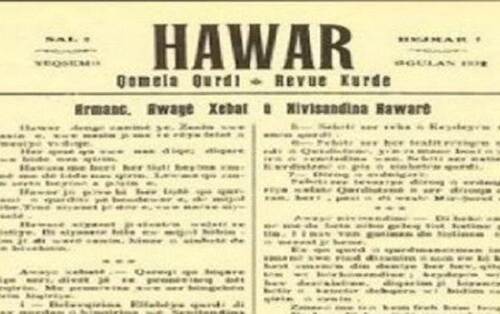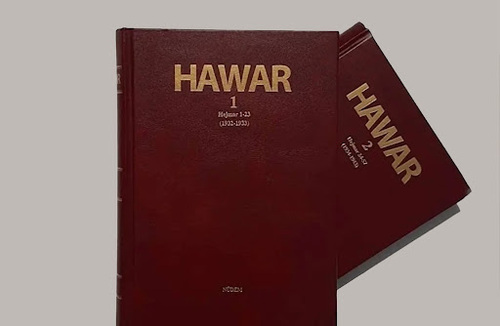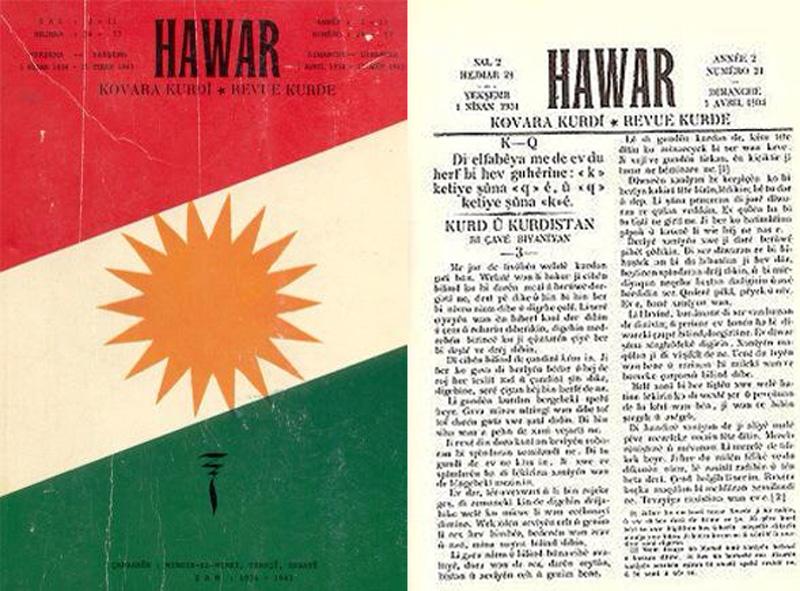Elan Mohammed
"Hawar is the voice of knowledge. Knowledge is self-knowledge. Self-knowledge opens the way to happiness and joy. Anyone who knows themselves can introduce themselves. Our cry first of all introduces the existence of our language because language is the first condition of existence.”
This valuable and meaningful saying has had a great impact on the history of Kurdish language and literature. You may know who this saying belongs to. This is the golden saying of the Emir of Kurdish language and literature, Mir Jaladat Badr Khan. Yes, dear readers, this time we introduce Hawar magazine which became the cry of Kurdish language and literature.
On May 15, 1932, a major step was taken for Kurdish language and literature. Hawar began to be published under the leadership of Jaladat Ali Badr Khan. He created something unprecedented in his pages and opened a new chapter in Kurdish history and destiny. It brought together the voices of the scattered, tired, and exiled Kurdish people. It became a voice for them, for us, for you. The voice of the Kurdish people, the voice of mutual knowledge and self-knowledge. Thanks to Hawar, a language that had been forgotten for hundreds of years under restrictions and bans was resurrected.

Thanks to Hawar, Kurdish was written in the Latin alphabet for the first time. Hundreds of concepts and thousands of different words were collected from different regions and made available to us in the pages of Hawar. We Kurds were aware of the characteristics of our language that do not exist in any other language in the world. The pages of Hawar and the voice of Hawar reached its readers despite economic, political, and social pressures and created new readers for itself and the Kurdish language. Not only readers, but writers grew up there. We can say that thanks to Hawar, we know Jigarkhwen, Nuruddin Zaza, Usman Sabri, Qadrijan, and many other writers who have expressed their voices in the pages of Hawar. Today, anyone and any organization that researches the Kurdish language and literature starts with Hawar or accepts Hawar as a unique stage and continues in this way.

For the first time in Kurdish history, the Kurdish language was written in Latin characters in Hawar magazine, therefore the magazine has a special position in the development and consolidation of the Kurdish language. The first issue of Hawar was published on May 15, 1932, and by August 15, 1943, 57 issues had been published. The magazine was published in Damascus, the Capital of Syria. Hawar was published twice a month. Hawar was a political and literary magazine. The magazine mainly published research, stories, and poetry in Kurdish. Thus, Hawar became a pioneer in literature and language and a literary school.

Since the time of Hawar, many things have happened and changes have taken place in this geography and the field of Kurdish language and literature.
But today, the road opened by Jaladat grows brighter, the light of Hawar grows brighter, and the sound of Hawar grows louder. Thanks to the voice of Hawar, many educated people feel their language and take ownership of their language, culture, literature, and existence.









